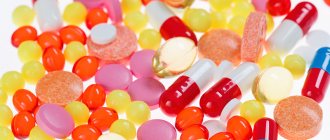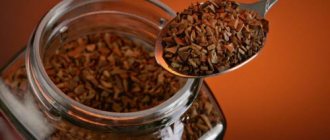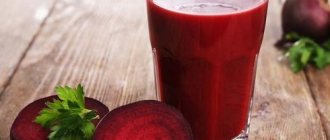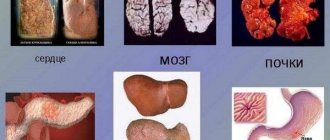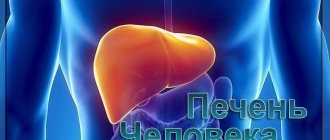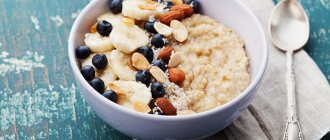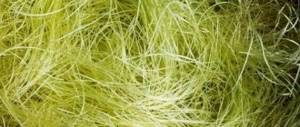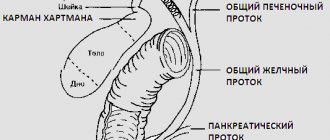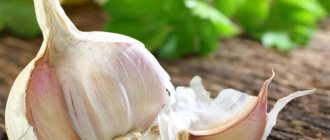Some products have become controversial. They are considered to be almost a panacea for all ailments. Very often such misconceptions concern, for example, medicinal herbs. Meanwhile, their use as a remedy requires detailed instructions, precise dosage, knowledge of indications and contraindications.
Such popular preventive remedies as onions and garlic are sometimes credited with the laurels of winners of serious diseases, openly promoting them to everyone. But before subjecting a diseased organ to a massive garlic attack, it is necessary to study in detail all the pros and cons of this amazing product.
Basic facts about liver and disease
The liver is an unpaired organ, the second largest in the human body. If the gland is healthy, then it is impossible to palpate it in the right hypochondrium: the edge of the liver slightly extends beyond the rib only with a deep breath. The organ consists of two main lobes, which are divided into another twenty segments. The parenchyma is also lobular, the main cells are called hepatocytes.
Major liver diseases:
- hepatitis (acute and chronic);
- lesions of the hepatic vessels;
- cirrhosis;
- affected gallbladder and its ducts (inflammation, blockage with stones);
- malignant tumor processes;
- infection of various etiologies.
Only a doctor can recognize this or that liver disease. But in order to go to a specialist in time, who will prescribe adequate treatment, you need to know the specific symptoms:
- Bitterness in the mouth;
- Jaundice of the sclera, skin, mucous membranes;
- Pain under the right rib;
- Small bruises and capillary stars on the skin;
- Skin itching.
Of course, it is much easier to cure the disease at the initial stage of the disease. But liver pathologies rarely allow such early treatment. This is due to the fact that there are no pain receptors in the liver parenchyma. The signal about a problem comes too late, when the organ increases in size so much that it begins to put pressure on the nearby stomach and intestines, which, in turn, respond with pain.
Tips and tricks for eating garlic
Doctors everywhere recommend eating this plant as a way to prevent colds or in the process of treating them, and only to people who do not suffer from inflammation of the pancreas.
But even absolutely healthy people should not get carried away with its use, nutritionists say. It is especially dangerous to use it on an empty stomach, because garlic, when entering the human body, causes an increased secretion of gastric juice, which has negative consequences for the pancreas.
Such processes can provoke not only an exacerbation of pancreatitis in a person suffering from this disease, but also cause its appearance in a healthy person. And although the negative effect of this vegetable on the human body has not been proven, doctors still advise not to overuse it.
Inflammation of the pancreas is an extremely dangerous disease, the consequences of which can even be fatal. But by adhering to the rules of proper nutrition and listening to the advice of your doctor, the disease can be, if not minimized, then completely cured.
One of the main conditions that help in the fight against pancreatitis is constant adherence to strict dietary rules. This also includes eliminating or minimizing the consumption of foods that can trigger the appearance or development of inflammation.
- Using the monastery collection to treat pancreatitis
You will be surprised how quickly the disease recedes. Take care of your pancreas! Over 10,000 people have noticed significant improvements in their health simply by drinking a morning drink...
The importance of diet for liver diseases
The processes of neutralization of poisons take place in the liver. When there is any disease, the detoxification function does not work at full capacity. Therefore, at the treatment stage, it is important to exclude the entry of harmful substances from the outside to facilitate the functioning of the organ. And the main thing that should be done is to completely change your approach to nutrition.
There are foods that have a detrimental effect on the liver, and they must be excluded. Others, on the contrary, can help recovery.
| Benefit | Harm |
| Low-fat dairy products | Smoked, spicy and salty foods |
| Lean meat | Fatty meats, fish, poultry |
| Dried bread, crackers | Sour fruits and berries |
| Fish and seafood with dietary fat content | Butter buns, fresh bread |
| Groats | Cocoa |
| Non-acidic vegetables, berries, fruits | Onion |
| Honey, marshmallow, marmalade |
In addition, there are certain nuances of proper nutrition: it is better to eat more often, but less; choose boiled, baked and stewed; observe the temperature regime of food.
This diet is also recommended for healthy people as a preventive cleansing of the body. It not only normalizes bile production, but also improves pancreatic juice levels.
Properties of garlic
There are certain products whose benefits are widely known, but whose harm is not obvious. Garlic is one of these. Its effect on the body is considered to be extremely beneficial. But every rule has its exceptions. Before use, you should find out how garlic affects the liver and under what diagnoses it should be removed from the diet.
In terms of chemical composition, this is a real natural treasure. And although it is always necessary to make allowances for the conditions in which he grew up, the overall picture is still impressive.
In its raw form, garlic contains up to 3% protein, 15-28% sugars, vitamins C, PP, B1, B2, carotene, pantothenic acid, pyridoxine, niacin. The tart taste and smell is due to the presence of essential oil with allicin. This is a powerful antioxidant and natural antibiotic, which, unfortunately, is destroyed by heat treatment.
The microelement composition is also very extensive: calcium, iron, magnesium, phosphorus, potassium, sodium, zinc, manganese, selenium. Garlic also contains a very useful, but rarely found in foods, element - germanium. Thanks to even the microscopic content of this substance, the product becomes a means of preventing malignant neoplasms.
The beneficial properties of garlic can be continued as follows:
- Helps in the destruction of pathogenic microflora in the gastrointestinal tract, preventing putrefactive fermentation, improving the secretory function of the stomach.
- Help with ARVI, respiratory tract infections: active substances in garlic can help thin mucus and remove it.
- Preventing atherosclerosis by reducing the level of “bad” cholesterol.
- Restoring damaged hepatocytes, liquefying bile and preventing the formation of stones.
- Antihelmintic effect.
But it should be remembered that all these qualities work either as prevention or as help for minor disorders of the body. But in most cases, eating garlic is not recommended for liver disease. Especially if the illness is severe and requires long-term treatment. In addition, this product is contraindicated for gastritis and ulcers. It can provoke an attack of epilepsy, exacerbation of hemorrhoids. It is also excluded during pregnancy and breastfeeding, as it contains a sulfanyl-hydroxyl ion, which acts as a poison at the stage of formation of brain cells in a child.
Boiled or stewed garlic for inflammatory processes
People suffering from inflammation of the pancreas will have to significantly reduce the consumption of foods that have a burning taste.
If your dish loses all its taste properties without this plant, and the course of the disease is far from exacerbation, then doctors only allow the use of stewed or boiled garlic for pancreatitis.
But it should be noted that during heat treatment it loses all its beneficial qualities.
If you have pancreatitis, you should also exclude foods such as pickled or salty preparations from your diet. According to nutritionists, they not only harm our body, but also contain a large amount of garlic.
Garlic and liver: benefits and harms
Due to such an ambiguous effect on organs and systems, it is necessary to know for sure whether fresh garlic can be eaten and for which liver diseases you need to pay more attention to it. The most important rule is that it is useful only in small quantities. Patients with problems with bile production and bladder pathologies can talk about the benefits of its use. But before using it, you should consult your doctor, since some drugs under the influence of allicin cause internal bleeding.
You can eat garlic in minimal doses for chronic liver diseases. For example, with hepatitis C, it is an aid in treatment. But in the event of an exacerbation of any illness, it is necessary to immediately eliminate even an insignificant amount of this product, so as not to cause irreversible consequences. Garlic is certainly contraindicated for acute forms of liver diseases, so you should not test for yourself whether it is harmful during such periods or not.
Is it possible for pancreatitis?
When preparing your diet, garlic is excluded. When purchasing, be sure to check whether the product is garlic or not. In various stages of inflammation, this spice is contraindicated. If you eat a hot additive in the acute stage, the person’s condition will worsen, which will lead to sad consequences.
During exacerbation
In what cases can you eat a vigorous spice for pancreatitis? During exacerbation of chronic pancreatitis, hot, hot spices are contraindicated to avoid irritating the inflamed organ.
The cell structure is disrupted and the performance of the gland will become critical due to tissue necrosis. This condition manifests itself with unpleasant symptoms - acute epigastric pain, nausea, vomiting and diarrheal disorders.
Applicable in the first days of exacerbation, a patient with pancreatitis is allowed to drink water and rosehip decoction.
When severe symptoms decrease, foods are consumed that have a gentle effect on the inflamed organ. Vegetables can be eaten without spices or additives. Take more fluids and low-fat broths. Diet during illness is a key path to recovery.
For chronic
Garlic for pancreatitis of the pancreas in the acute stage of a chronic process is also prohibited. But there are some nuances. Completely remove from the diet foods that contain traces of spicy seasoning:
- marinade;
- sauces (mayonnaise, ketchup and others);
- smoked meats;
- cheeses;
- sausages;
- industrial crackers.
Cleansing the liver with garlic
The term “liver cleansing” should be understood as a course of taking garlic in various variations. A gradual increase in the concentration of active substances contained in this product allows us to talk about a therapeutic effect at the end of the course. Before the procedure, you must consult your doctor and follow the following rules:
- Periodically warm the right hypochondrium for a week. This allows you to activate the flow of bile.
- Drink plenty of fluids at all times.
- Switch to a healthier diet early. It is best to follow diet number 5. Avoid alcohol.
- The procedure should be carried out at least once every six months.
Cleansing recipe No. 1
You need a glass of low-fat milk, 3 cloves of garlic and a teaspoon of honey. Heat the milk, be sure to add crushed garlic and honey. Take the strained mixture on an empty stomach, one tablespoon at a time, for a week.
Cleansing recipe No. 2
This recipe is suitable for long-term storage. For 1000 milliliters of liquid honey you need a glass of high-quality olive oil, four whole lemons and three heads of garlic. Break it all down into a single mass and refrigerate for 24 hours. Take half a tablespoon three times a day.
But, of course, before undergoing the procedure, you need to find out whether garlic is harmful to the liver or any other organ associated with it. In each specific case, it would be correct to consult a doctor about any of your actions.
It has long been no secret how many beneficial elements and vitamins garlic contains, and that its use can have a positive effect on almost all organs and systems of the body.
In the West, garlic is even called “superfood”, and garlic powder is packaged in capsules and sold as a dietary supplement for many diseases and simply for general improvement of the body. In Russia, garlic is widely used in folk medicine and cooking.
You can often hear the opinion that garlic harms the human liver. Others point to its benefits for the gastrointestinal tract, including the liver. But what do scientists say about this?
Modern research indicates that the effect of consuming garlic depends entirely on its dose. Low doses actually have an antioxidant effect, cleanse liver cells from damage and promote their regeneration. High doses, on the contrary, have hepatotoxic properties, that is, they destroy liver tissue.
What dose is considered safe? According to one study , a dose of 0.1-0.25 grams of garlic per kg of body weight per day is safe. It is within this dose that you can get the maximum beneficial properties from its use. Anything higher is harmful.
Healing combination of milk and garlic
The healing properties of garlic, coupled with the beneficial effects of milk, made their tandem a truly healing elixir. One has only to remember the recipe for folk treatment of pancreas, milk and garlic in which magically cure pancreatitis, which the most modern medicines cannot cope with.
The healing properties of garlic, coupled with the beneficial effects of milk, made their tandem a truly healing elixir.
It is important to know! Milk drunk after eating garlic can completely remove the garlic smell from your mouth.
Don't miss one of the most useful articles about: Nagging pain in the lower abdomen in women - causes
To lower blood pressure, you can consume this miracle mixture, prepared by mixing a liter of milk and five heads of garlic. To get rid of coughs during colds, an infusion of garlic with milk helps a lot, as it destroys bacteria and viruses accumulated in the nasopharynx.
Before using any of these remedies, you should definitely consult your doctor.
Possible harm
As mentioned above, you should not get carried away with garlic. Let us repeat once again: for a healthy person, a safe dose is 0.1-0.25 grams of garlic per kg of weight per day. That's about a few cloves a day.
Moreover, you should not abuse the product for gastritis, stomach and duodenal ulcers, as well as for liver diseases.
Garlic can have the following harmful effects.
Cell destruction
Due to the content of toxic elements, garlic has an irritating effect on cells. The digestive organs are especially affected, where normal processes are disrupted due to irritation of the mucous membranes. Thus, irritation affects the cells of the kidneys and liver.
Poisonous effect
Garlic contains a substance that is poisonous and, if the safe dose is exceeded, penetrates the brain cells. Excessive doses of garlic can disrupt brain function, contribute to the development of diseases of the central nervous system and place enormous stress on the liver. 5 more facts about the effect of garlic on the brain here →
Can it cause liver pain?
Eating garlic can cause pain on the right side, where the liver is located. But the gland itself does not hurt. Unpleasant sensations occur against the background of cholelithiasis, since garlic, having a choleretic effect, causes contraction of the gallbladder. This can also cause the movement of stones.
Pain can also occur with problems with the pancreas, on which garlic acts as an irritant and causes peristalsis. There may be a disease associated with the gastrointestinal tract, such as gastritis.
Garlic for acute pancreatitis
In the acute stage of the disease, starting from the first hours and for several days, eating any food is prohibited. In the first days of illness, the patient must adhere to a three-point rule:
- Cold – moderate cooling of the area where the pancreas is located.
- Hunger is a complete ban on eating for 2-3 days or more (the number of days of fasting will be determined by the doctor, based on the patient’s well-being).
- Rest - bed rest is prescribed.
It is not difficult to guess that garlic is out of the question during this period. But even when the acute condition has already been relieved, it is still strictly prohibited to consume this vegetable.
For many, such a ban is surprising, since the vegetable is a good disinfectant that improves the digestive function of the gastrointestinal tract. But, as mentioned above, the spice is a good stimulator of the secretory function of the stomach and pancreas, and the gall bladder is no exception. When garlic is consumed, these organs are over-activated, which can lead to the return of the acute phase of pancreatitis.
Is it possible to eat it for certain diseases?
If you have a diseased liver, eating garlic is not recommended. For example, if the gland is inflamed and hepatitis is detected, then the vegetable worsens the patient’s condition and the course of the disease.
For cirrhosis
With such a serious disease as cirrhosis of the liver, it is necessary to constantly support your immunity, which independently begins to fight the disease.
In this regard, the best remedy is a mixture of garlic with lemon and honey (the recipe is given above). It is this combination of components that has a positive effect on the immune system, activating and supporting it.
For hepatosis
And with liver hepatosis, a garlic-ginger drink will help, which improves metabolism and prevents the accumulation of fat.
Prepare it this way:
- Wash and chop fresh ginger root (you will need 1.5 tbsp).
- Fill it with a liter of boiling water and cool slightly.
- Then pour the infusion into a thermos.
- Squeeze out a large clove of garlic through the garlic worm.
- Let it brew for 30 minutes.
You need to take it like this:
30 minutes before meals 4 times a day. Course - 21 days.
Beneficial features
The vegetable has a specific aroma. The beneficial effect of the plant is explained by the high content of microelements and vitamins. It contains substances such as copper, phosphorus, manganese, selenium, zinc, iron, without which the body cannot function normally. Garlic is also rich in vitamins B, C, P, A and E, allicin, carotene and folate, which are necessary to maintain the human immune system and protect against viral infections.
Some doctors call the plant a natural antibiotic that has a healing effect on the body:
- Antiseptic. When consuming bad water or low-quality food, it is enough to eat 1-2 cloves of garlic, and the harmful effects of bacteria will be neutralized.
- Immunomodulatory. Vitamins and microelements of the plant can support human immunity and protect the body from harmful influences.
- Antiviral. Consumption of garlic is a prevention during the spread of various infections.
- Hepatoprotective. This product is useful for patients with hepatitis or patients who have already had it; it helps reduce excess cholesterol and cleanse the circulatory system, which has a good effect on the quality of liver cells.
- Stabilizing. As a result of lowering cholesterol levels, it maintains normal blood pressure.
Chemical composition
Garlic has a beneficial effect on the gallbladder and liver due to its unique composition. Its benefits and harms are due to the presence of the following natural components:
- micro-, macroelements (copper, iron, manganese, calcium, magnesium, phosphorus, and zinc);
- vitamins (A, PP, C, E, K, group B, except B12);
- proteins (6.5 g per 100 g of garlic);
- fat (up to one gram);
- carbohydrates (about 30 g);
- organic compounds;
- saturated and unsaturated acids.
The vegetable is useful to add to food, as it:
- reduces the number of atherosclerotic plaques, thereby improving blood supply to internal organs;
- increases vascular elasticity;
- normalizes blood pressure;
- reduces blood clotting;
- fights viruses. It is not for nothing that it is recommended for preventive purposes during flu epidemics;
- kills bacteria;
- supports myocardial function;
- accelerates recovery from diseases of the bronchopulmonary system. The benefit is to facilitate the removal of sputum from the bronchial tree and eliminate infection;
- strengthens immune defense;
- improves digestion by stimulating the production of enzymes.
How does garlic affect the liver?
On the Internet you can find many ways to cleanse the liver using garlic remedies. If we are talking about a healthy gland, the procedure undoubtedly brings benefits. Thus, toxic substances are eliminated and the functioning of the organ is normalized.
When a person is diagnosed with hepatitis, that is, inflammation of the liver, eating garlic can aggravate the pathology and worsen the general condition.
Is garlic good for the liver?
Now let’s take a closer look at how garlic is good for the liver and how it can affect its performance. The vegetable contains an active component such as allicin. After it enters the body, the level of enzymes increases in the bloodstream, namely antioxidant catalase, as well as glutathione peroxidase. They prevent cell oxidation, aging and destruction (destruction).
The action of garlic is aimed at stimulating the outflow of bile, which prevents the development of stagnation, relieves the liver and prevents stone formation in the biliary tract. In addition, garlic juice reduces cholesterol levels in the blood, which prevents atherosclerosis.
Is garlic harmful to the liver?
You are allowed to eat no more than three grams of garlic daily, otherwise the risk of brain dysfunction increases. This is due to the intake of a large amount of sulfanyl-hydroxyl ions into the body. This substance has a toxic effect on nerve fibers and causes their dysfunction.
Garlic is not recommended for liver disease, intestinal ulcers, or inflammation of the gastric mucosa due to high acidity. A healthy person can eat no more than three cloves of garlic per day. If the dish prepared for dinner contains a larger amount of it, at night you may experience bitterness in the mouth, insomnia, and an increase in blood pressure.
During remission
Patients are interested in: can I eat garlic during remission? The answer from nutritionists and gastroenterologists is clear: the spice can serve as a source of recurrence of the attack.
When unpleasant symptoms disappear and treatment aimed at reducing pancreatic activity is stopped, some patients forget about the diet and eat everything again.
Many of the patients use the seasoning boiled or dried. During heat treatment, the irritant properties are lost. However, this option is not entirely successful. Along with harmful properties, beneficial substances also disappear. Even after stewing or cooking the spice, its dangerous properties remain.
When deciding to use spices processed at high temperatures in food, you should definitely consult with your doctor.
In the treatment of diseases, the positive effect of folk remedies using milk and garlic has been noted. These combinations expel helminthic parasites from the intestines, drink the tincture when coughing and with elevated blood pressure.
But for diseases of the pancreas, this combination is strictly prohibited.
Human diseases are varied and entail complications and limitations. Pancreatitis is one of the most serious ailments of the human body, which can bring a lot of problems to the patient. Patients whose pancreas is affected often ask whether it is possible to eat garlic during pancreatitis or whether it is strictly prohibited.
General characteristics
Pancreatitis is a disease of the pancreas, which involves acute or chronic development.
The pancreas in the human body is responsible for digesting food and producing gastric juice. When this organ malfunctions, the patient often experiences acute pain.
When the pain ceases to cause inconvenience, during moments of calm in the disease, lovers of the spicy and fragrant vegetable are tormented by doubts about the possibility of consuming it.
This article will help explain how garlic acts on the pancreas, and whether it benefits or harms it.
Acute form of pancreatitis and garlic
Although the vegetable is rich in its beneficial properties, its excessive consumption is dangerous to human health. Garlic affects every aspect of the body differently; let’s take a closer look at this exciting topic.
The effect of garlic on the pancreas in its acute form is destructive. It promotes the production of large amounts of gastric juice by the organ, which, when the walls of the gland become inflamed, slows down its performance.
In the acute form, the disease develops rapidly. The ducts of the organ become inflamed, which entails their significant narrowing. Pancreatic function, production of gastric juice. Due to the thin ducts, the work of the organ is difficult, and it cannot cope with a heavy load.
All unprocessed gastric juice remains in the gland, which can lead to serious consequences. If measures are not taken in time, the pancreas begins to process itself.
This option can lead to 3 outcome scenarios:
Lethal. This outcome is possible if inflammation of the pancreas lasts for a long time without the necessary treatment. The organ destroys itself due to the inability to remove excess gastric juice. The consequence is complete destruction and inability to work of the gland.
Cyst formation. Treatment was carried out, but with a delay. The pancreas has already begun the process of self-destruction. A cyst is damage to the walls of an organ that he managed to inflict on himself.
Transition of the disease to the chronic stage. The disease does not go away without a trace. Timely treatment stops all inflammatory processes and restores the functioning of the gland. Disturbances in the functioning of the organ leave their mark and this implies the possibility of a new exacerbation.
Garlic provokes inflammation of the pancreas, as a result of which its use in acute forms of pancreatitis is strictly prohibited.
Chronic pancreatitis and garlic
The chronic disease is a consequence of the acute form of pancreatitis. With it, remissions and inflammation are possible.
In this form of pancreatitis, garlic can provoke an exacerbation, especially if consumed in large quantities.
With chronic pancreatitis, the pancreas is at constant risk, but without provocateurs, remission is possible, that is, complete restoration of the organ.
Consuming garlic when the disease subsides
In the absence of exacerbation of pancreatitis, doctors' opinions differ. Some categorically prohibit eating garlic, others suggest replacing fresh vegetables with heat treatment of garlic before eating.
Heat treatment destroys most of the beneficial substances of garlic, but at the same time, irritants harmful to the pancreas are partially destroyed.
In case of chronic pancreatitis, during a lull, fresh garlic can provoke an exacerbation of the disease, but with heat treatment this risk is significantly reduced, but does not disappear completely.
Eating garlic during remission
Remission is the complete retreat of the disease. The pancreas recovers from all damage and the risks of an acute form are reduced to a minimum.
Only in this case can garlic be consumed for pancreatitis, but in moderation. The risk of the disease returning has been reduced to a minimum, but has not disappeared completely.
Garlic is a healthy vegetable. But for a person suffering from endocrine diseases, the benefits from it are much less than the harm. Each person must make his own choice whether to eat garlic for pancreatitis or not, and the article is an auxiliary source.
Is it possible to cleanse the liver with garlic?
There are many recipes for cleansing the gland.
Before the procedure, a mandatory examination and consultation with a doctor is required. The fact is that in the presence of symptoms and severe liver dysfunction, such cleansing measures are prohibited. Garlic contains many useful substances, in particular methionine (an amino acid), which acts as a hepatoprotector, protecting cells from the damaging influence of environmental factors. Hepatocytes restore their physiological structure, and liver functions are normalized.
The gland can be cleansed with garlic in combination with lemon. The procedure is recommended once a year, preferably in the spring. To prepare the drink, just finely chop the ingredients (five pieces each) and beat them in a blender with 50 ml of water. Now add a liter of hot water and almost bring to a boil (but do not boil). After filtering, the medicine will be ready.
The cleansing course lasts 20 days, during which it is recommended to drink a lot of water. It can also be green tea, jelly, compote or non-carbonated mineral water. In the morning you should drink up to half a liter of liquid at a time. Garlic mixture should be taken 10 ml three times a day.
Another approved cleaning method is based on olive oil. You need 65 ml. For preparation you will also need two cloves of garlic and 220 ml of lemon juice. Mix all the ingredients, add chopped ginger or apple juice in a small volume. Take it in the morning and drink it with herbal tea. The duration of the cleansing course is 10 days.
Garlic can be harmful for hepatitis, cirrhosis, steatohepatosis and other liver diseases.
Recipes for dishes with garlic for diet No. 5
If a hepatological disease is diagnosed, the doctor prescribes drug therapy and prepares a diet. The task of gentle nutrition is to restore hepatocytes, unload the liver and reduce the severity of symptoms of pathology. As long as you follow medical recommendations, the disease gradually regresses or becomes chronic.
Basic principles of the dietary table:
- frequent meals (up to five times a day);
- small serving size;
- ban on foods that stimulate the secretion of hydrochloric acid;
- avoidance of hot spices, including garlic, onions and peppers;
- dishes should be prepared by stewing, boiling or baking;
- daily calorie content of food is 2500 kcal;
- products must be thoroughly crushed;
- salt limits are 10 g per day;
- At least one and a half liters of fluid per day is required.
Considering the fact that garlic is prohibited for liver disease, asafoetida can replace it. It is an oriental spice whose taste and aroma resembles a garlic-onion mixture. Do not forget that the spice also has restrictions on the volume and frequency of use, which must be taken into account when creating a menu.
Asafoetida is allowed outside of an exacerbation of the disease as an additive to pilaf, cutlets or salad.
Dietary pilaf recipes
There are several recipes for preparing pilaf:
- ingredients - small onion, half a kilo of chicken, 220 g of rice, four carrots, a liter of water and 25 g of asafoetida. First you need to cut the meat into small pieces and simmer in a slow cooker in its own juice until it has completely evaporated. Now add a little vegetable oil, chopped onion, carrots and simmer for 10 minutes. After this, add seasoning, rice, add hot water and continue cooking in the slow cooker. If desired, you can add dried apricots (50 g) at the stage of preparing vegetables;
- ingredients - 250 g of beef, a glass of rice, a small onion, 480 ml of water, two carrots and asafoetida. The cooking technology is as follows: wash and remove the tendons from the meat, add water and simmer in a slow cooker for 40 minutes. Now cut it into pieces and pour the broth into a container. Carrots should be washed, peeled, chopped and simmered with grated onions until tender. Add washed rice, vegetables, asafoetida to the beef multicooker, mix thoroughly and wait for the end of the “Pilaf” program;
Cutlet recipe
Steam cutlets can easily replace fried foods, which will undoubtedly be beneficial for the body.
Of course, at the beginning of the diet, the patient will find steamed meat tasteless, but this will not last long. Diet cutlets are easier to digest and provide a lot of micro- and macroelements. To prepare, you will need a little more than half a kilo of minced chicken, a small onion, asafoetida, yesterday's bread and 100 ml of water. As for minced meat, it is recommended to make it yourself, since lard and chopped offal can be added to the finished store-bought product. So, you need to soak pieces of bread in water, then twist them together with meat and peeled onions. Mix everything thoroughly until smooth, add spices, form cutlets and sprinkle with flour. It is better to make them small, which is necessary for uniform steaming.
Pour 400 ml of water into the multicooker bowl, install a special plate and place the cutlets on it. You should not place them close to each other, as they increase in volume during cooking. The duration of the program is half an hour.
Here are some tips to help you prepare a delicious dish:
- cutlets should be thoroughly sprinkled with flour, which will preserve the internal juice;
- if you add an egg to the meat, the dish will be more tender;
- to obtain homogeneous minced meat, you can use a blender;
- You can use raw potatoes instead of day-old bread.
Snack recipe
You can quickly and deliciously cook zucchini with cottage cheese. The dish is stewed in the oven, so it is perfect as a dietary snack. The recipe includes two vegetables, 300 g of low-fat cottage cheese, 30 g of sour cream, salt and seasoning. This volume is designed for 5-6 servings.
Now let's start cooking. First, wash the vegetables, peel them and cut them into circles up to two centimeters thick. Add asafoetida to the cottage cheese. Grease a baking sheet with vegetable oil and lay out the zucchini. Place cottage cheese and sour cream on top. Bake for half an hour at 180 degrees.
It is important to remember that a dietary diet is the key to successful treatment of liver diseases. Even the most expensive drugs will not be able to completely get rid of the pathology if you continue to abuse alcohol and fatty foods.
In this case, only temporary remission and slight relief of the condition can be achieved.
